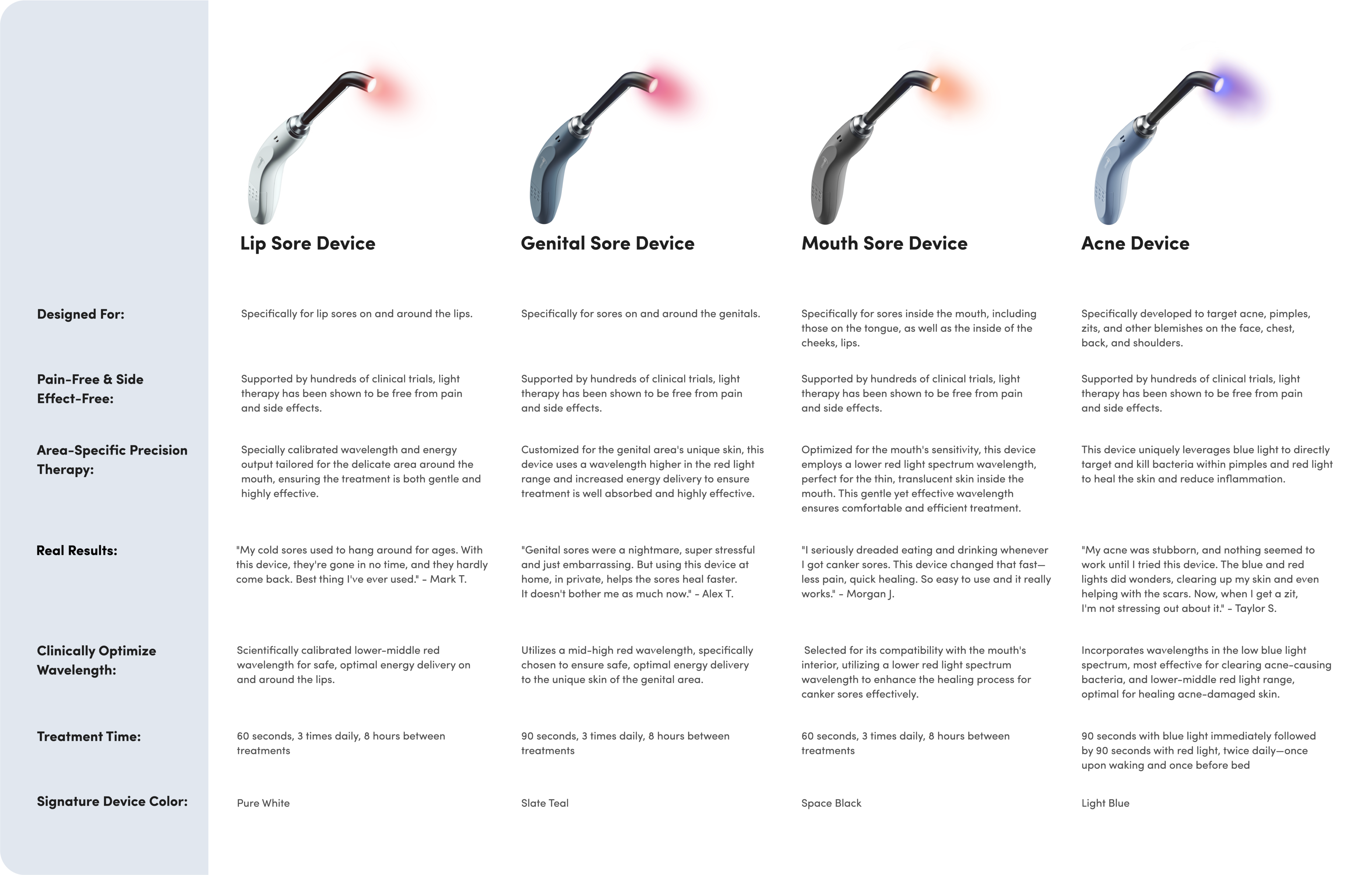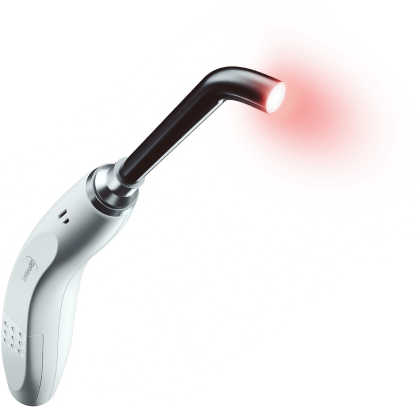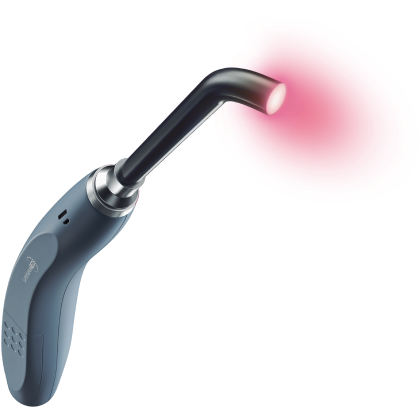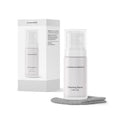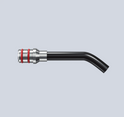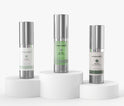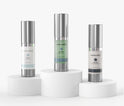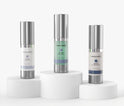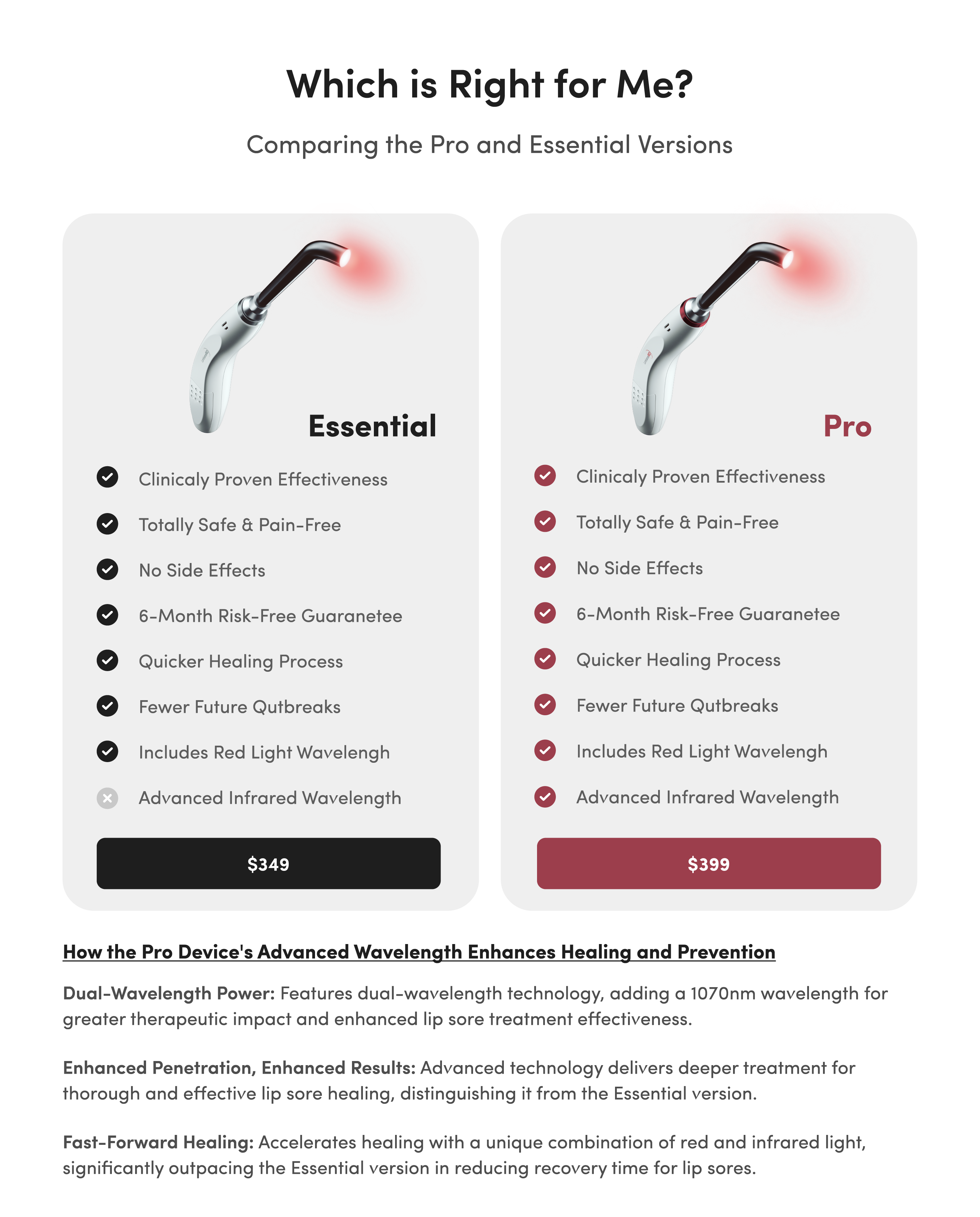Clinical Studies: Phototherapy and Cold Sores
The information provided is for educational purposes only and is not intended to support the safety or effectiveness of Luminance Medical’s devices, or diagnose, treat, cure, or prevent any disease. It's not a substitute for a consultation with your healthcare provider and should not be construed as medical advice. The clinical studies presented below were conducted with devices that deliver the same or similar light wavelengths and irradiance as the Luminance RED.
HOW LIGHT CAN TREAT COLD SORES?
Clinical Data shows that light treatment can help to heal faster, stop pain and reduce future outbreaks.
Short on time? Watch this short video that summarizes of some of the key findings resulting from recent clinical trials.
Whether you’re suffering from a painful cold sore or you’re determined to prevent your next HSV-1 outbreak from occurring, you don’t want to spend your time and money on treatments that provide temporary or unreliable results.
The efficacy of the Luminance RED treatment has been proven in numerous clinical studies, so you can trust that two minutes of Luminance RED therapy a day will reduce healing time and decrease your risk of future outbreaks.
Low-Intensity Laser Therapy is an Effective Treatment for Recurrent Herpes Simplex Infection
In this study, researchers selected a group of participants who not only had HSV-1, but had a “recurrent infection,” defined as having at least one herpes attack per month for more than 6 months, independent of any known triggering mechanism such as fever, sun exposure, or menstruation.
The results found that patients who received treatment averaged 37.5 weeks (263 days) before their next cold sore episode, whereas those who did not receive treatment averaged 3 weeks (21 days).
What caused the treatment to have such a big impact?
When assessing why treatment had such a substantial impact on recurrence, an indirect effect of LLLT on cellular and humoral components of the immune system involved in antiviral responses rather than a direct virus-inactivating effect was proposed.
This means that the treatment is suggested to actually strengthen the immune function against the HSV-1 virus, which prevents future outbreaks from reoccurring.

Comparing the Effect of Diode Laser Against Prescription antiviral Cream for the Treatment of Herpes Labialis
In this placebo-controlled study, researchers found that patients who received treatment had a 49% reduction in time to heal compared to those who had no treatment. The treatment group took an average time to heal of 2.2 days while the non-treatment group took 4.3 days.
The Effect of Low-Level Light Treatment on (Cold Sores)
In this well conducted clinical study, researchers found that light therapy increased the healing rates of cold sore ulcers and immediately decreased reported pain significantly more than both the prescription cold sore treatment (a pharmaceutical drug commonly prescribed for cold sores) and placebo treatment.
Overall, this study concluded that treatment of cold sore lesions using low-level laser exposure in the form of light is an effective and affordable way to treat the herpes simplex virus.
These well-constructed clinical trials clearly demonstrate the efficacy of treating and preventing cold sore outbreaks with light therapy.
However, the light must be applied at both the proper wavelength and irradiance to achieve these results. That's exactly why Luminance RED was designed specifically to meet these specifications.









